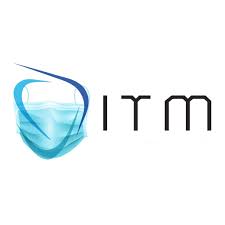
Joints form the connections between bones. They provide support and help you move. Any damage to the joints from disease or injury can interfere with your movement and cause a lot of pain.
Many different conditions can lead to painful joints, including osteoarthritis, rheumatoid arthritis, bursitis, gout, strains, sprains, and other injuries. Joint pain is extremely common. In one national survey, about one-third of adults reported having joint pain within the past 30 days. Knee pain was the most common complaint, followed by shoulder and hip pain, but joint pain can affect any part of your body, from your ankles and feet to your shoulders and hands. As you get older, painful joints become increasingly more common.
Joint pain can range from mildly irritating to debilitating. It may go away after a few weeks (acute), or last for several weeks or months (chronic). Even short-term pain and swelling in the joints can affect your quality of life. Whatever the cause of joint pain, you can usually manage it with medication, physical therapy, or alternative treatments.
Your doctor will first try to diagnose and treat the condition that is causing your joint pain. The goal is to reduce pain and inflammation, and preserve joint function. Treatment options include:
Medications
For moderate-to-severe joint pain with swelling, an over-the-counter or prescription nonsteroidal anti-inflammatory drug (NSAID) such as aspirin, ibuprofen (Advil, Motrin), or naproxen sodium (Aleve), can provide relief. A newer generation of NSAIDs known as Cox-2 inhibitors (celcoxib) is also good for pain relief, but all except one of these drugs (Celebrex) have been removed from the market because of an increased risk of heart attack, stroke, and other cardiovascular events. NSAIDs also can have side effects, potentially increasing your risk for gastrointestinal bleeding.
If you have milder pain without any swelling, acetaminophen (Tylenol) can be effective. Be careful when taking this medicine though, especially if you drink alcohol, because high doses may cause liver damage. Because of the risks, you should take any of these pain medications with caution.
If your pain is so severe that NSAIDs and Cox-2 medicines aren’t effective enough, your doctor may prescribe a stronger opioid medication. Because opioid drugs can cause drowsiness, you should only use them under a doctor’s care. They also can cause constipation, which you can relieve by taking laxatives.
Other drugs that may help relieve pain include:
- Muscle relaxants to treat muscle spasms (may be used together with NSAIDs to increase the effect)
- Some antidepressants and antiepileptic drugs (which both interfere with pain signals)
Topical Agents
Capsaicin — a substance found in chili peppers — may relieve joint pain from arthritis and other conditions. Capsaicin blocks substance P, which helps transmit pain signals, and it triggers the release of chemicals in the body called endorphins, which block pain. Side effects of capsaicin cream include burning or stinging in the area where it is applied. Another topical option is an arthritis cream containing the ingredient, methyl salicylate.
Injections
For people who don’t find joint pain relief from oral or topical medications, the doctor can inject a steroid medication (which may be combined with a local anesthetic) directly into the joint every three months to four months. Steroid injections are most commonly used in patients with arthritis or tendinitis. The procedure is effective, but in most situations the effect be temporary. It can also have side effects; if steroid injections mask an injury, you could overuse the joint and damage it even further.
Other injection options include:
- Removing fluid from the joint (and is often done in connection with a steroid injection)
- Injections of hyaluronan, a synthetic version of the natural joint fluid. This is used to treat osteoarthritis
Physical Therapy
You can work with a physical therapist to strengthen the muscles around the joint, stabilise the joint, and improve your range of motion. The therapist will use techniques such as ultrasound, heat or cold therapy, electrical nerve stimulation, and manipulation.
If you are overweight, losing weight can relieve some of the pressure on your painful joints. Exercise is one effective way to lose weight (along with diet), but be careful to stick with low-impact exercises that won’t further irritate the joint. Swimming and bicycling are among the best exercises because both allow you to exercise your joints without putting impact on them. Because water is buoyant, swimming also relieves some of the pressure on your joints.
Home Care
You can relieve short-term joint pain with a few simple techniques at home. One method is known by the acronym, PRICE:
- Protect the joint with a brace or wrap.
- Rest the joint, avoiding any activities that cause you pain.
- Ice the joint for about 15 minutes, several times each day.
- Compress the joint using an elastic wrap.
- Elevate the joint above the level of your heart.
Applying ice to your painful joints can relieve the pain and inflammation. For muscle spasms around joints, try using a heating pad or wrap several times a day. Your doctor may recommend that you tape or splint the joint to minimize movement or reduce pain, but avoid keeping the joint still for too long because it can eventually become stiff and lose function.
Alternative Treatments
Some research has indicated that glucosamine and chondroitin supplements can help with joint pain and improve function. Both of these substances are components of normal cartilage, which helps cushion the bones and protect joints. Glucosamine and chondroitin supplements are available in capsule, tablet, powder, or liquid form. Although these supplements don’t work for everyone, they are safe to try because they don’t have any significant side effects.
No matter what treatment your doctor recommends, get medical help right away if the pain gets intense, your joint suddenly becomes inflamed or deformed, or you can no longer use the joint at all.





More Stories
Health Tips: “Tips for Making Yourself as Comfortable as Possible During a Migraine Attack”
HEALTH TIP: “Seven tips to remove your stretch marks after pregnancy”
Researchers discover most common symptom of COVID-19 and it’s not a dry cough